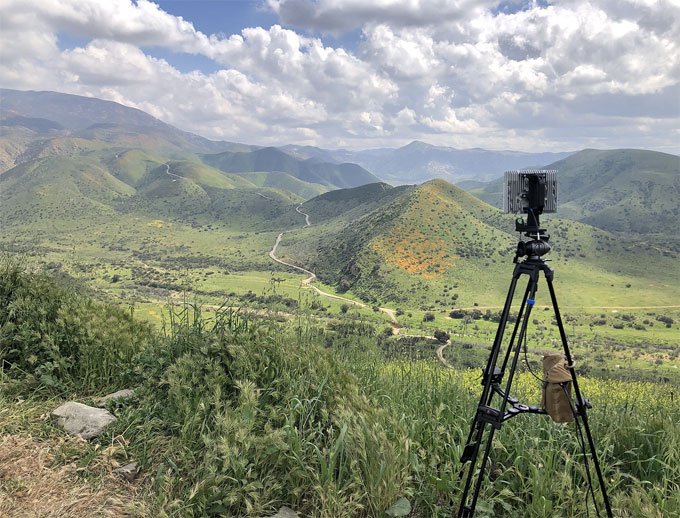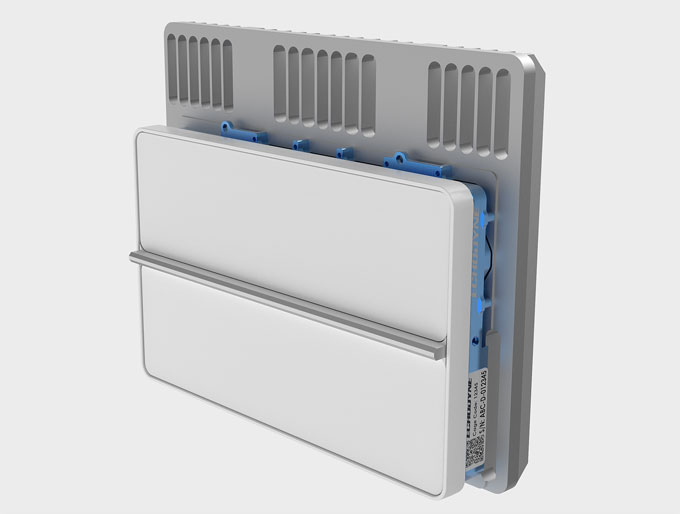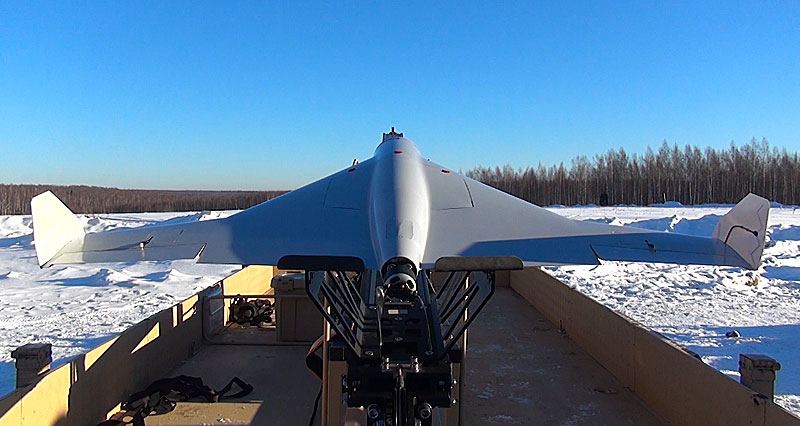
Guest Editorial by Leo McCloskey, Echodyne, VP Marketing
On a drizzly day in November 2017, on the first Sunday after Thanksgiving, the San Francisco 49ers were hosting the Seattle Seahawks in an NFL game, when a drone entered Levi’s Stadium, dropping on the crowd leaflets that ranted about television media.
Police at the stadium reacted quickly, spotted a man operating the drone from the parking lot, and as he drove off, notified colleagues across the bay, where he soon showed up to fly his drone into the Oakland Coliseum where the Raiders were playing the Denver Broncos.
The man, identified as Tracy Michael Mapes, 56, of Sacramento, was arrested, his drone confiscated, and he was charged with a gross misdemeanor.
(A Sacramento County man is facing federal charges for allegedly flying a drone and dropping leaflets over fans at 49ers and Raiders games in 2017. Courtesy of KPIX CBS SF Bay Area and YouTube. Posted on May 16, 2019.)
Perry Tarrant, retired Assistant Chief of the Seattle Police Department, where he commanded the Special Operations Bureau, and now advises on the beneficial uses of drones for policing—as well as on countering the threats from maliciously used drones—looks at such events and says: “What if . . .”
The Fear: What If
Tarrant isn’t alone in his fears.
Police agencies, NFL officials, MLB teams, Homeland Security officials, and a whole lot of others are asking:
What if… an unauthorized drone crashes and injures someone?
What if people in a stadium or other crowded venue see a drone, panic, and start a stampede?
What if a drone is carrying toxic weapons or explosives instead of pamphlets?
The FAA closes airspace over stadiums, race tracks, and a range of other venues for major events. Yet violations are common.
(San Francisco 49ers tackle Drone Safety: The NFL’s San Francisco 49ers are working with us to tackle the issue of unmanned aircraft safety. Defensive Safety Eric Reid of the San Francisco 49ers reminds fans – and everyone else – to abide by the laws covering personal drone use. Courtesy of the FAA and YouTube.)
At least four NFL stadiums have seen drone intrusions, as well as a number of university football stadiums.
The fears aren’t just theoretical, as Tarrant saw for himself during his days with the Seattle Police Department when an 18” by 18” 2-pound drone crash landed during the 2015 Seattle Pride Parade.
“We had a large crowd and someone was flying a UAS [unmanned aircraft system, the more formal name for a drone], it lost power, and crashed into a woman’s head,” Tarrant recalls.
“She was seriously injured, knocked unconscious, and required several stitches.”
(In January 2017, a Seattle Municipal Court jury found the drone operator, Paul M. Skinner, 38, guilty of reckless endangerment stemming from the June 2015 incident. Skinner had been charged with the gross misdemeanor, accused of engaging in conduct that created a “substantial risk of death or serious bodily injury to another person. ”Courtesy of Wochit News and YouTube.)
The Seattle Times reports a jury later convicted the drone pilot of a gross misdemeanor of reckless endangerment, and that he was fined $500 and sentenced to 30 days in jail.
Weaponizing Drones
You don’t have to look far on the internet to find videos of weaponized drones.
Hobbyists have used them to create airborne firearms, as well as explosives delivery systems.
But the stakes were raised recently when, according to the Washington Post, Kalashnikov, the Russian manufacturer of the AK-47 assault weapon, introduced a commercially available “suicide drone” designed to act like a very low-cost smart bomb.
The Washington Post quotes from a Kalashnikov news release saying the drone is “four feet wide, can fly for 30 minutes at a speed of 80 mph and carries six pounds of explosives.”
(Kalashnikov, the company behind the AK-47, has created a new kind of drone. SOURCES: The Washington Post, Kalashnikov’s News Statement, National Interest website, Intelligent Aerospace. Kalashnikov introduced the new KUB-BLA drone at the International Exhibition of Arms and Military Equipment IDEX-2019 in Abu Dhabi.Courtesy of TomoNews US and YouTube. Posted on Mar 2, 2019.)
Putting the threat into chilling perspective, the Post quotes Nicholas Grossman, a professor of international relations at the University of Illinois and author of the book Drones and Terrorism, as saying, “Whoever buys one will have the ability to steer a bomb with a high degree of accuracy unparalleled except by some of the U.S. military’s smartest bombs.”
Good Uses, Too
While the potential threats of drones are real and growing, it is important to see the benefits they are providing, including for law enforcement.
In fact, law enforcement may be one of the largest users of the technology.
The Center for the Study of the Drone at Bard College reports that as of May 2018, of 910 state and local public safety agencies in the U.S. that had purchased drones, 599 were law enforcement agencies.
Tarrant sees law enforcement agencies using drones for a number of purposes, including:
Mapping traffic accidents.
- Tarrant says an airborne drone can remove hours from the traditional work of using tape measures to diagram out the scene of a major accident.
- Drones are so useful in this that they are finding their ways into the trunks of many state patrol cars as standard equipment.
(The Austin Police Department will soon begin using drones to map fatal crash scenes. Officers say drone technology produces a quicker and more accurate result than mapping from the ground, and could drastically cut down traffic delays. Courtesy of KXAN and YouTube. Posted on on Aug 23, 2018.)
Scoping natural disasters.
-
Whether dealing with flooding, wild fires, or the aftermath of tornadoes or other events, drones can provide a bird’s-eye view of the terrain, to help police, search and rescue teams, and utility workers survey damage, search for survivors, and better deploy resources.
Monitoring public events.
-
Parades, festivals, marathon races, protest marches, and other events that bring throngs of people into centralized locations create situations where law enforcement and other public organizations may need to keep track of what is happening to ensure safety.
-
Drones, again, are great here.
Site surveillance.
-
Police use drones to establish aerial surveillance of locations prior to planned enforcement actions to ensure the best timing for SWAT teams or other forces, while ensuring the safety of others in the area.

Unfortunately, these same types of events also seem to tempt unauthorized drone flights.
Tarrant notes that drone users can span a spectrum going from compliant to criminal, with plenty of variations between, including the careless, clueless, and crazy.
NEEDED: SITUATIONAL AWARENESS
The FAA estimates there are some two million drones in the United States, which means that law enforcement agencies regularly include drone detection when planning security for large public events.
Part of the all-important situational awareness for law enforcement includes detecting as soon as possible if drones are entering the air space above a large event.
(Learn More. See how the Federal Aviation Administration (FAA) is at the forefront of safe drone integration into the National Airspace System (NAS). Courtesy of the FAA and YouTube. Posted on May 22, 2019.)
“We are starting to see more and more jurisdictions build into their response plans some type of contingency actions for nefarious and/or accidental encroachment of UAS vehicles into restricted airspace,” Tarrant says.
“However, that contingency action is often simply a visual safeguard, nothing more than having a semi-trained observer out there with binoculars, or strictly using the naked eye, looking for a UAS in close proximity to an event.”

Tarrant is relieved to see development of electronic detection systems which should be able to provide earlier and more precise alerting than simply a person watching the sky.
“There are a number of electronic detection systems already commercially available and others in development, that should provide better detection,” Tarrant says.
“And it’s only a matter of time before such systems become more of a requirement for local law enforcement.”
Detection devices can range from portable radar systems to high definition cameras and radio frequency detectors.
Important for law enforcement is the evidentiary value of and need for persistent, high-fidelity UAS detection and tracking data that precisely identifies and follows drone activity in the protected airspace.
(EchoGuard radars constantly scan large volumes of airspace for intrusions, threats, and anomalous activity. Courtesy of Echodyne Corporation and YouTube.)
The optimum solution will involve a combination of detection, tracking, classification, and identification technologies working together, so that a portable radar deployed at an event could detect an incoming drone, while a high definition camera could capture an image, and RF detection could help determine its point of control.
The Need for Mitigation
The big question that currently lacks an answer is: What comes after detection and identification of an unmanned aircraft flying in protected airspace?

Will we someday see miniature dog fights in the air as law enforcement launches pursuit drones to track and destroy intruder drones? Not quite yet.
For one thing, there’s a big concern about collateral damage, including the danger posed by a disabled drone falling from the sky onto a crowd below.
Even jamming the radio frequency of an intruder could cause it to fall onto people below.
And for the serious criminal, drones can be flown without using radio frequencies.
And interrupting radio frequencies could have unintended consequences, perhaps interfering with other communication systems, including medical devices such as pacemakers for the heart or insulin pumps.
Of the available mitigation technologies for non-military use, none could intercept a drone like that marketed and sold by Kalashnikov as a weapon.

Nor should we sleep comfortably thinking that such a drone is a product anomaly or will remain absent from our markets.
Drone manufacturers will continue to deliver longer range, better payload capacity, and improved battery performance for their retail markets, while hobbyists ride component price reductions to build ever more capable homemade drones.
Something needs to be done to permit properly designated authorities to act against drone operators misusing an unmanned aircraft.
But just what those measures will be still needs to be worked out—on the federal level, as any vehicle that moves through the air is within the province of the FAA, and on the State level, where myriad statutes obscure the rights of those beneath the unmanned aircraft and deny the use of mitigation technologies.
Pressure on the FAA, and Congress, and State authorities is building, but simple answers continue to be elusive for this complex question:
What are the rules and responsibilities for those operating UAS relative to the rights of those living and working below UAS, and what options are available to law enforcement for continuing their mission to protect and serve the public in this context?
Cathy L. Lanier, the NFL’s Senior Vice President of Security, told the Washington Post “We have to get it together sooner or later. Drones aren’t even new.”
“The new technology now is autonomous vehicles. We’re already behind the curve by a couple generations.”
About the Author
Leo McCloskey leads Echodyne’s marketing efforts across its multiple customer segments.

Prior to joining Echodyne, he led marketing efforts to companies in automotive, enterprise software, global networking, and end user experience management. Leo contributes significant expertise in connected services, software, technology and advanced networking.
He has held senior leadership positions at IntelliTax, Nexagent, Ebone, Terabeam, and EDS, Inc. where he defined a novel method for connecting customers to a distributed global service delivery infrastructure.
He holds a B.A. in Russian studies and language from Dickinson College.
Learn More…
(See a Drone Mitigation Concept from 2018 ‘ASTORS’ Homeland Security Awards Program Platinum Award Winner SpotterRF for Best Persistent Aerial Monitoring Solution. Courtesy of SpotterRF and YouTube. Posted on Oct 10, 2018.)
SpotterRF Launches New SPOTTERai Auto Track Classification (See Video)















